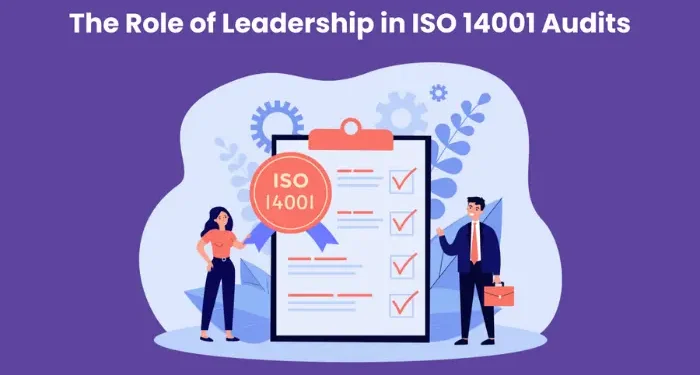These days, an organisation’s commitment to environmental protection is shown by its ISO 14001 Certification. Accreditation may only be acquired after a comprehensive assessment of environmental management practices. This evaluation is carried out using an ISO 14001 Audit, a critical procedure that evaluates an organisation’s compliance to environmental management standards. In ISO 14001 audits, leadership is essential because it attests to an organisation’s dedication to achieving ISO 14001 certification and highlights its environmental obligations.
In this blog, we will go into more detail on the crucial role that leadership plays in ISO 14001 audits. Specifically, we will examine how strong leadership fosters environmental responsibility and moves a business closer to ISO 14001 certification.
Understanding ISO 14001 Certification
Before exploring leadership’s role in ISO 14001 audits, it is essential to understand the importance of ISO 14001 certification. Environmental Management Systems (EMS) are governed by an international standard called ISO 14001. This standard provides enterprises with a framework for developing, implementing, and maintaining effective EMS. An organisation’s ISO 14001 accreditation attests to its dedication to minimising its impact on the environment, following the law, and consistently improving its environmental performance.
The Significance of ISO 14001 Audits
The ultimate measure of an organisation’s dedication to environmental sustainability is an ISO 14001 audit. These audits are thorough examinations that assess an organisation’s ISO 14001 compliance and environmental management processes and procedures. The goal of an ISO 14001 audit is to confirm that a company is successfully implementing, maintaining, and enhancing its environmental management system (EMS).
The Role of Leadership
An organisation’s leadership is essential to ISO 14001 audits. It is important to show that you care about the environment; it is not simply a formality. The following are important areas where leadership has a role in the performance of ISO 14001 audits:
- Setting the Tone
Strong leaders establish the tone for the whole company. They clearly communicate that ISO 14001 certification is a top concern, which fosters a culture of environmental responsibility. This dedication to environmental sustainability is a strategic goal that fits the organisation’s purpose and values, not merely a box to be checked.
- Providing Resources
Effective leadership makes sure that the monetary and human resources needed to support the EMS are allocated. This involves giving staff members the resources and instruction necessary to carry out their environmental duties.
- Monitoring and Review
The leadership is in charge of monitoring the EMS’s performance. It is important to evaluate and analyse its environmental objectives and targets regularly to make sure the company is on pace to fulfil its environmental goals.
- Communication
One of the main pillars of leadership in ISO 14001 audits is effective communication. Leaders must disseminate the significance of ISO 14001 certification throughout the firm and motivate staff members at every tier to engage in proactive environmental endeavours.
- Leading by Example
Setting a good example is the most effective strategy for leadership to influence ISO 14001 audits. When executives show others in the company that they are committed to environmental stewardship, it motivates others to do the same.
- Fostering Employee Engagement
In ISO 14001 audits, leadership is also responsible for encouraging staff involvement. Leaders who actively include their staff in environmental projects foster a feeling of accountability and ownership. Employee engagement increases the chances that they will see areas for development, provide creative solutions, and fully support the company’s environmental sustainability efforts.
The Benefits of Effective Leadership
A company may get several advantages from leadership that actively engages in and supports ISO 14001 audits:
- Better Environmental Performance: When the leadership gives environmental responsibility a top priority, this inspires the whole business to adopt more sustainable practices.
- Regulatory Compliance: By ensuring the company complies with environmental standards, leadership lowers the possibility of penalties and legal issues.
- Improved Reputation: An organisation’s ISO 14001 certification improves its standing by showing stakeholders, customers, and the general public its commitment to sustainability.
- Cost Savings: Better resource management and waste reduction are two ways that effective leadership may find ways to save costs.
- Innovation and Continuous Improvement: Long-term sustainability initiatives may be propelled by a culture of innovation and continuous improvement, which can be fostered by active leadership.
Conclusion
In summary, the importance of leadership in ISO 14001 audits cannot be emphasised enough. Leadership conveys the value of ISO 14001 certification, sets the tone, provides resources, tracks performance, and sets an example. The degree to which executives are dedicated to environmental responsibility determines how successful a firm will be in obtaining ISO 14001 certification and, eventually, improving the environment. In ISO 14001 audits, strong leadership is necessary to bring about significant change.


